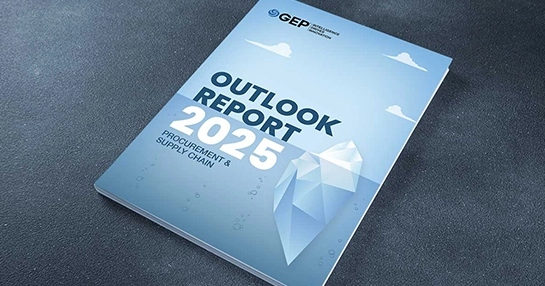
How Procurement Can Unify Data, Tech and People With AI-Driven Orchestration
- Automation has made repetitive tasks easier, but procurement remains fragmented.
- Procurement should adopt AI-powered total procurement orchestration.
- The orchestration roadmap brings together technology, data, and people.
November 19, 2025 | Procurement Software 4 minutes read
Procurement sits at the vortex of enterprise change. As businesses expand globally and adopt digital tools, procurement’s workload has jumped, thanks to more categories, more suppliers, and more requests from across the company. Employees expect speed; leaders expect strategic impact.
Automation has made repetitive tasks easier, yet the whole experience remains disjointed. Requests come in via emails or chat tools; systems don’t talk to each other; and visibility ends as soon as a process crosses departmental lines. This fragmentation costs time and credibility.
Procurement teams can overcome fragmentation and deliver strategic value by adopting total procurement orchestration, an AI-driven, unified framework that connects every process, persona, and platform from intake to payment. When people, processes, and platforms work as a unit, procurement stops reacting and starts leading. That’s when it begins guiding enterprise decisions with intelligence, speed, and purpose.
Procurement can put in place total orchestration with a roadmap that brings together technology, data, and people. It begins with intelligent intake to consolidate and structure enterprise demand, followed by end-to-end integration that links each process from sourcing to payment. Next comes cross-functional connectivity with finance, supply chain, and ESG systems to align decisions enterprisewide. The final step is investing teams with shared intelligence and control, ensuring that insights and accountability flow to everyone involved.
Begin With Smart Intake to Unify Demand
Everything starts at intake — the point when someone in the company initiates a purchase or sourcing request. Today, that request might arrive by email, worksheet, or ticketing tool, creating chaos before procurement even begins.
Intelligent intake uses AI to capture every request in one place and infer what the requester actually needs. Whether someone types “Need laptops for new hires” or “Book travel for client event,” the system recognizes patterns, applies policy, and routes the request automatically to sourcing, a preferred supplier, or an existing contract.
This single, structured entry point prevents maverick spend and ensures policy compliance from the start. Over time, AI learns common patterns, predicting needs and suggesting pre-approved options. The experience becomes as intuitive for users as consumer shopping but governed by enterprise logic.
Unify End-to-End Source-to-Pay Workflows
Once demand is captured cleanly, the challenge is to connect sourcing, contracting, purchasing, and payment. Many enterprises still treat these as separate processes owned by different teams or systems.
End-to-end integration binds the entire procurement lifecycle with a single thread of data that runs through. Supplier details captured during sourcing automatically populate contract clauses; negotiated prices flow into purchase orders; invoices match against those same terms without manual checks.
This integration makes repetitive data entry redundant, prevents errors, and provides real-time visibility into where every request stands. Procurement leaders access dashboards showing cycle times, savings, and compliance in one place. Finance teams see committed versus actual spend right away.
By integrating sourcing, contracting, purchasing, and payment into one continuous process, procurement gets rid of manual handoffs and ensures every stage flows seamlessly into the next.
Connect Procurement With Adjacent Business Functions
Procurement doesn’t work in a vacuum. Decisions about suppliers affect cash flow, sustainability scores, and production timelines. Connecting procurement data with finance, supply chain, and ESG systems is key to creating enterprise-level insight.
When linked with finance, procurement gains instant visibility into budgets and working-capital targets. It can time payments to strengthen cash positions or support strategic suppliers. Integration with supply-chain systems shows real-time inventory and logistics data, enabling procurement to tweak sourcing plans before shortages occur.
ESG connectivity adds another dimension: supplier diversity, carbon footprint, and labor-practice metrics can be integrated into sourcing decisions. AI can even recommend greener or more ethical options when equivalent suppliers exist.
These connections turn procurement from a cost controller into a value orchestrator, influencing growth, resilience, and reputation at the same time.
The Agentic AI Playbook for Procurement Pros
How to Move from Hype to Action and Results
Equip Teams With Shared Intelligence and Control
Technology delivers little without people who can use it effectively. A connected procurement model must include collaboration, transparency, and empowerment.
Unified dashboards and workspaces allow every participant — requester, buyer, approver, finance partner — to view a single version of truth. Status updates, exceptions, and performance indicators are visible to all, eliminating the need for constant follow-ups.
AI-driven insights recommend next steps: “This supplier’s delivery times are slipping; consider switching to Contract B.” Predictive alerts flag potential non-compliance before it becomes an audit issue.
This shift is equally about people and technology. With unified systems and shared visibility, procurement professionals can focus on proactive strategy instead of reactive troubleshooting. Stakeholders experience faster and clearer processes, and procurement strengthens its role as a trusted business partner.
When these four enablers — intelligent intake, end-to-end integration, cross-functional connectivity, and shared intelligence and control — come together, procurement achieves more than efficiency. A connected procurement ecosystem doesn’t just do things faster; it helps the entire company make smarter decisions.
Procurement’s challenge isn’t a lack of technology; it’s a lack of connection. Automation, AI, and analytics deliver impact only when they operate as parts of a single, intelligent system.
Total procurement orchestration provides that structure: a unified model linking people, process, and platform into a continuous flow of insight and action.
When every request, decision, and payment is connected, procurement stops managing transactions and starts orchestrating enterprise value.
Discover More: AI-Powered Procurement Orchestration Platform
To learn more about how a connected, smart procurement model can transform your company, download GEP and ProcureCon’s e-book, Intake Management and Beyond: The Value of Total Procurement Orchestration.



